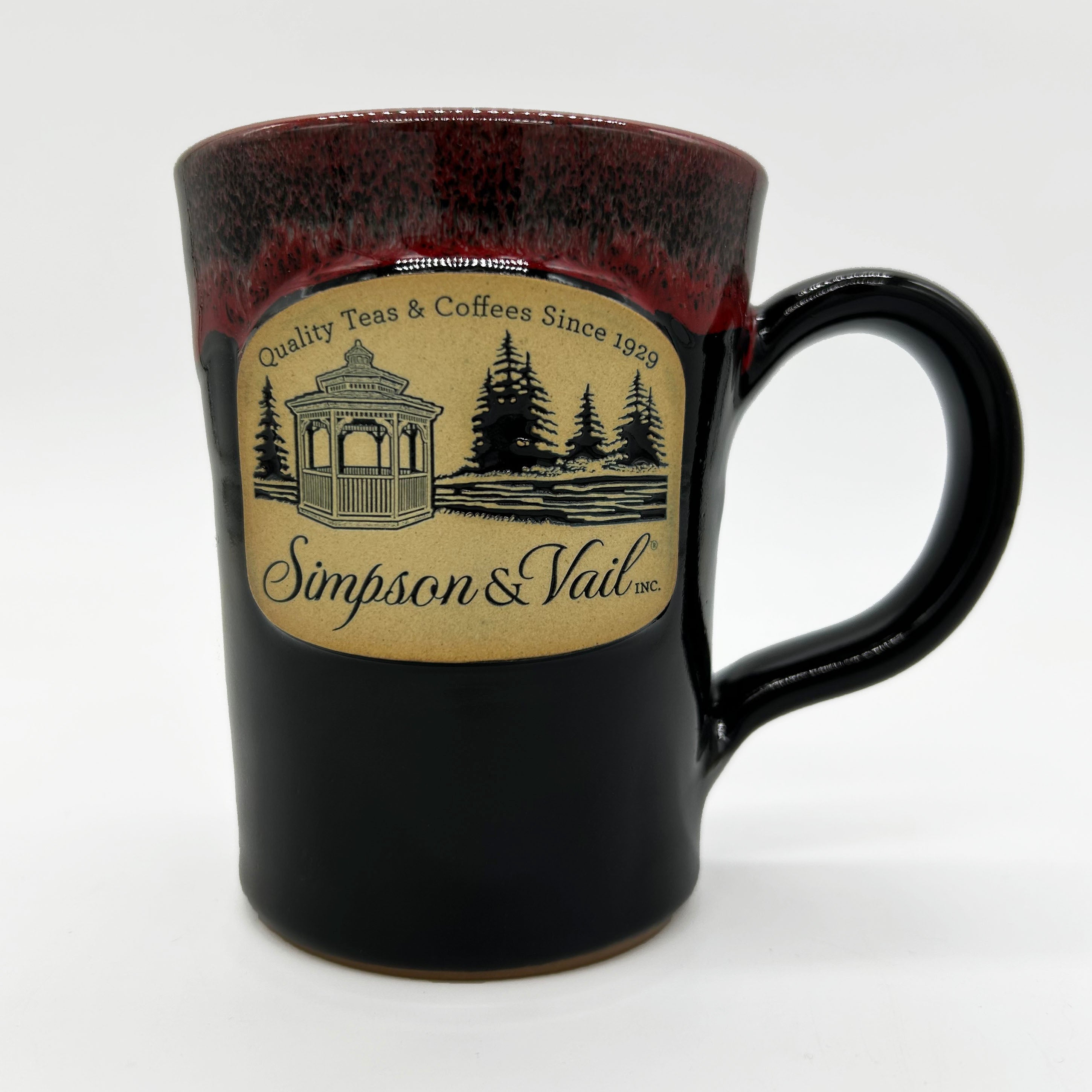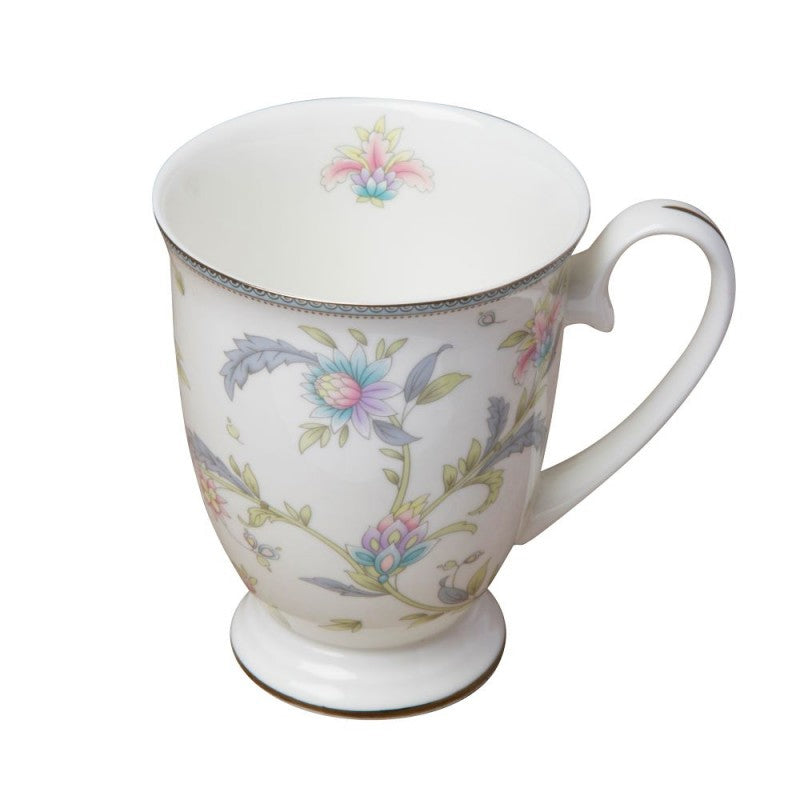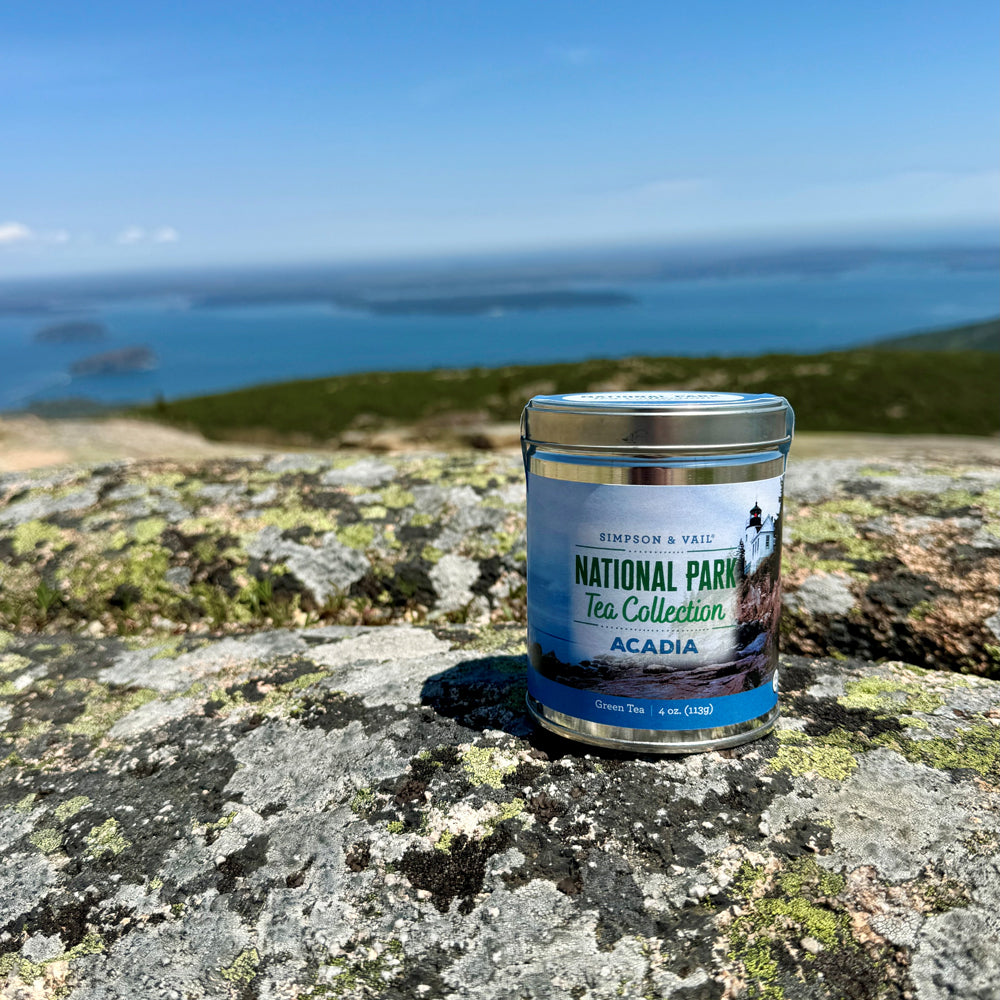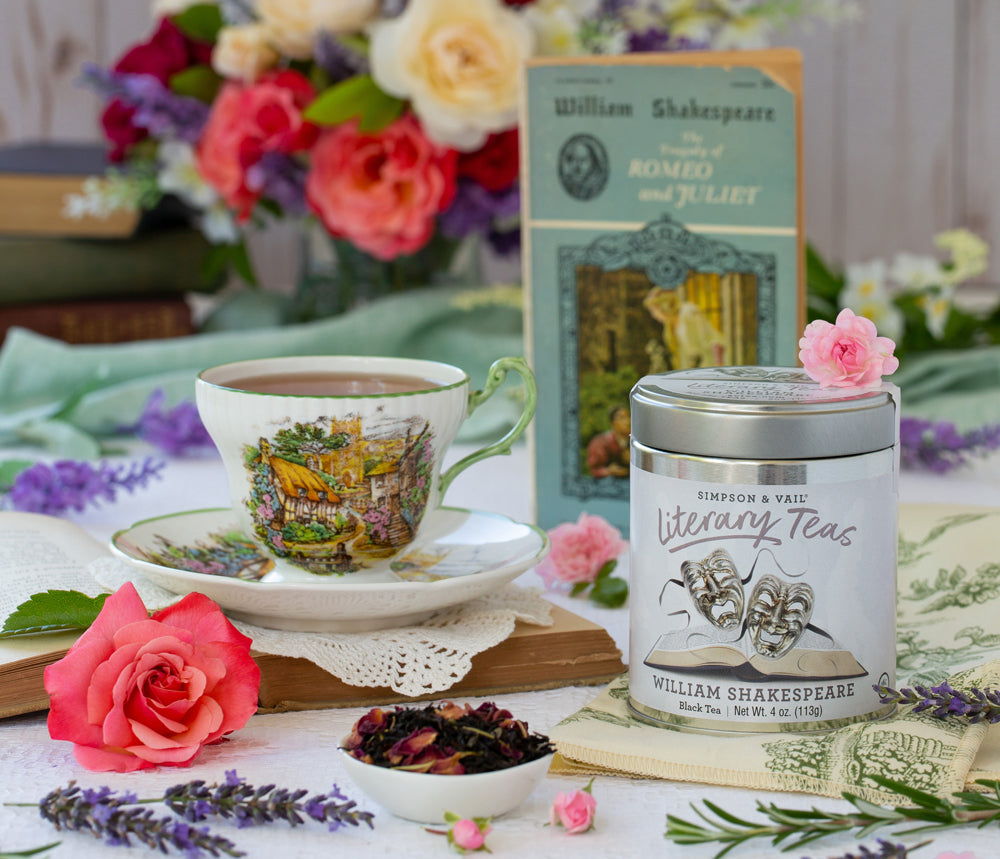The History of Earl Grey Tea
What is the History of Earl Grey tea?
Earl Grey teas, traditionally, were blends comprised of varying black teas with Bergamot oil added to them. Today, any tea (green, white, herbal) that is sprayed with Bergamot oil is known as Earl Grey (such as our Emerald Green Earl Grey, Rooibos Earl Grey, etc). Every tea merchant carries an Earl Grey black tea blend, but they are all very different due to the variations in black teas used for the blend and the quality of the bergamot oil. Here at Simpson & Vail we use high quality bergamot oil.
What is bergamot oil?
 Bergamot oil comes from the rind of the bergamot orange, which grows on the citrus tree Citrus bergamia. These trees are mainly grown for commercial use in Calabria, Italy, although, as with other citrus fruits, bergamot oranges can be grown in other places where the temperature rarely freezes and where there is not heavy rainfall or drought. Bergamot oranges can be found in the US, although these are generally a variety called Bouquet, which are mainly ornamental and do not contain the bergamot oil needed to make Earl Grey tea.
Bergamot oil comes from the rind of the bergamot orange, which grows on the citrus tree Citrus bergamia. These trees are mainly grown for commercial use in Calabria, Italy, although, as with other citrus fruits, bergamot oranges can be grown in other places where the temperature rarely freezes and where there is not heavy rainfall or drought. Bergamot oranges can be found in the US, although these are generally a variety called Bouquet, which are mainly ornamental and do not contain the bergamot oil needed to make Earl Grey tea.
As with the origins of Earl Grey tea itself, the origins of the bergamot tree also enjoy debate. Some believe that this tree originated in Southeast Asia and was introduced to Europe, while others believe that the tree originated in Greece. Perhaps both groups are partially correct. Current technology shows that the bergamot tree (and many other citrus trees) is actually a hybrid of ancient species. The bergamot tree is actually a hybrid of sweet lemon (Citrus limetta), from Southeast Asia, and bitter orange (Citrus aurantium), which is itself a hybrid between pomelo (Citrus maxima) and mandarin orange (Citrus reticulata), both from Southeast Asia.
The bergamot tree produces a small acidic fruit that is virtually inedible, but is renowned for the aromatic oil contained in the rind. This oil is the defining characteristic in any Earl Grey blend and is also used by cosmetic companies as a primary component in soaps, lotions, oils and perfumes. Bergamot oil has been said to alleviate depression and have a general calming effect. We know that when the oil is applied to tea leaves, the resulting cup is calming and delicious to drink and a tasty ingredient to use in sweet and savory recipes. The oil is also used as an antiseptic and to treat skin problems such as acne, eczema, and psoriasis. However, one side effect of the oil is that when applied to the skin and exposed to direct sunlight, some people experience photosensitivity and develop rashes. For this reason, synthetic bergamot oils started to be created. They can sometimes be used to replace natural bergamot oil in teas, although usually these synthetics are found in cosmetic products and perfumes.
History of the name Earl Grey
Earl Grey tea is said to have been named for the 2nd Earl Grey, however, the stories about how and why this famous tea was named are quite varied. There is a version that says that the Earl, while in China, saved the life of a mandarin’s son and was given a gift from the Mandarin of black tea with bergamot oil on it.
Another version is that a British diplomat actually saved this mandarin’s son and he was rewarded with this tea blend in appreciation, which was later named to honor the then Prime Minister. And yet another version is that the Earl was given this tea formula as appreciation for saving the life of the mandarin himself.
While these are great stories there are some problems with these versions. First, the 2nd Earl of Grey never went to China so it was not possible that he saved anyone’s life there. Citrus bergamia is not native to China, so if there was any oil added to tea it would have been a different Citrus species. Also, the Chinese did not drink adulterated (flavored) tea, so the likelihood of this theoretical mandarin creating this blend seems highly unlikely.
The Grey family states, on their website, that the aforementioned mandarin actually blended this tea specifically for the 2nd Earl to suit the water at their home, Howick Hall in Northumberland. The bergamot oil, they say, was put in the blend to help balance out the lime in the water. They further claim that once the Earl and Lady Grey began drinking this blend, their friends in London fell in love with it and so they approached Twinings with the recipe and asked them to make this tea for sale.
Today there is great debate between Jackson’s of Picadilly and Twinings about who has the authentic recipe for this blend. The Grey family supports Twinings, although an interesting thing to note is that Twinings Earl Grey is actually a blend of Chinese and Indian teas, which seems to deviate from the fanciful stories about the formula originating in China. In contrast, Jacksons’ only uses China black tea.
Who was the 2nd Earl?
The 2nd Earl of Grey, was Charles Grey (1764–1845). He is most noted for being Prime Minister of England (1830-1834) and for authoring the Great Reform Bill of 1832. This bill changed the way voting was performed in England and Wales. It added seats in the House of Commons for newly formed, larger cities that had no representation, while taking away seats from cities whose population had significantly dwindled. The bill also increased the number of men who were eligible to vote. And, some would claim, that the 2nd Earl was also famous for this namesake tea blend.
Exploring the myth
The Oxford English Dictionary sent out an appeal to readers to help find the origins of this blend. Contributors easily found references and advertisements for Earl Grey tea in the early 1900’s from Jackson’s of Picadilly. But since we are led to believe that the 2nd Earl was the inspiration for this blend, we need to search much further back.
 Earl Grey ad 1925 (from the Oxford English Dictionary)
Earl Grey ad 1925 (from the Oxford English Dictionary)

1919 ad from The Times (posted on OED article)
The earliest record found regarding bergamot oil was in 1824. “…The flavouring substance found to agree best with the original flavour of tea is the oil of bergamot, by the proper management of which you may produce from the cheapest teas the finest flavoured Bloom, Hyson, Gunpowder and Cowslip. … When it is thus improved, it is often sold at 18s and a guinea a pound. Cowslip tea has been as high as 32s.” (‘Lancaster Gazette‘, Saturday 22 May 1824, p3)
Other replies came in to OED with interesting ads. These advertisements from 1884 and 1867 show a company, Charlton & Co., as purveyors of this blend. Although it’s important to note that in 1867 they listed it as the celebrated Grey mixture and then in 1884 they began calling it the celebrated tea, Earl Grey mixture.

September 7, 1867 ad (from OED article)

June 19, 1884 Morning Post (from OED article)
The contributor who posted the 1867 ad credited it to the Foods of England blog posting. Their post has quite a few interesting details about the Earl Grey tea history.
If these ads are correct, and there’s no reason to believe otherwise, then Charlton & Co. were fantastic marketers who changed the name and created a blend of seeming distinction and elegance.
There is a mention, in the OED comments section, of Charlton & Co. purchasing another tea company named Thorpe & Grey. While we can’t find any information on this purchase, or on the Thorpe & Grey company, we did find information on another tea shop. The William Grey company was located in Morpeth, interestingly, near Howick Hall, home of Lord Grey. They advertised their Grey’s tea, which was most likely a tea blend they created not unlike our Simpson & Vail Special Blend tea. It makes a certain amount of sense that if this is a different company from Thorpe & Grey, both companies very well could have had a blend called Grey’s tea, which, when Charlton purchased them, would have been advertised.

From here the trail leads back to Jacksons of Picadilly. Jacksons was started as the Robert Jackson & Co. in 1815. Mr. Jackson’s partner was a man named George Charlton. Jacksons’s claims that the Earl himself gave the recipe to Mr. Jackson and Mr. Chalrton, and it still the same formula they use today. It’s interesting to note that while Jacksons and Twinings have long enjoyed the debate over who has the original formula for Earl Grey tea, they are both part of the same organization now. Twinings was acquired in 1964 by Associated British Foods, who also acquired Jacksons of Picadilly in 1990.
Simpson & Vail’s Earl Grey tea blends
While they may have started using bergamot oil in 1824 to improve the taste of inferior teas, the same cannot be said today … at least not here at Simpson & Vail. We use high quality bergamot on our premium teas and tisanes to create blends such as:
Earl Grey Aromatic (our standard Earl Grey tea)
Earl Grey Extra Aromatic (with extra bergamot oil)
Mrs. Grey’s (with orange and lemon peel)
Creamy Earl Grey (our Earl Grey with a touch of creamy Vanilla)
Summertime Earl Grey (our Earl Grey with peach)
Citrus Paradisi (our Earl Grey with grapefruit)
Decaf Earl Grey (less caffeine but still great tasting)
Victorian Earl Grey (with lavender, roses and rosemary)
Emerald Green Earl Grey (Green tea and bergamot)
Organic Rooibos Earl Grey (organic, caffeine free Rooibos and bergamot)
There is no end to the possible combinations of teas that may bear the name “Earl Grey”. And since Earl Grey Aromatic is still our number 1 selling tea, we know that our customers are delighted to try bergamot and tea combinations.
Earl Grey recipes
Earl Grey tea, besides being delicious on its own, also makes a fantastic ingredient in recipes and is used in a variety of ways. It is sometimes brewed and the brewed tea is added to sauces or grains. It is also ground finely and added to cakes, shortbread, cookies, pies and more. And still again, the tea is sometimes infused with other ingredients in a recipe (such as butter or milk). Below are just a couple of recipe ideas, but the possibilities are endless.
Earl Grey Shortbread
Earl Grey tea is a favorite with chefs and bakers. It works especially well in sauces, cocktails, cakes, cookies, confections and any recipe with chocolate! It also pairs very well with cheese, fish, meat, dairy, eggs and more.
Summary
In conclusion, I don’t think we’ll ever be able to prove the origins of Earl Grey tea or perhaps even of bergamot oil itself. If it’s correct that the ancestors of the current bergamot tree did originate in Southeast Asia, then it is certainly possible that a Chinese tea merchant could have combined it with teas. It is certainly possible that this tea was gifted to the 2nd Earl Grey in appreciation, thanks or friendship.
Just as plausible is the theory that the blend originated as the namesake for a tea company whose name was Grey. When the company was sold to another company, it is certainly possible that they advertised this celebrated blend to let customers know that they had this tea blend and were continuing to blend it. And just as possible, is that this company was clever at marketing and decided to add the name Earl to the blend to give it an air of importance and mystique. They certainly could have then added a back story about life-saving rescues, friendship, and gifts from overseas.
I like that there are some things in life that are not 100% set in stone. This tea blend will continue to be debated over the years, without a resolution. So decide for yourself which version suits you. Gratitude and friendship – or intelligent marketing.
In any event, the addition of bergamot to tea, has had a huge impact on the tea drinking world. If you’ve never explored this citrus tea taste, maybe today is the day!








Leave a comment